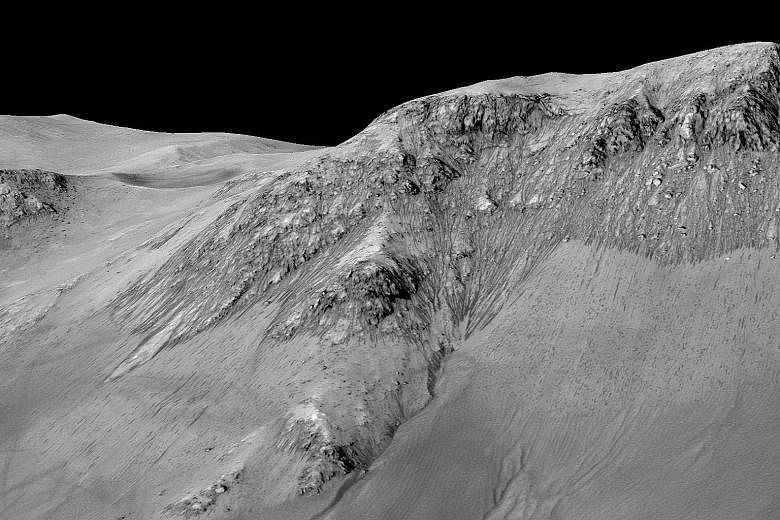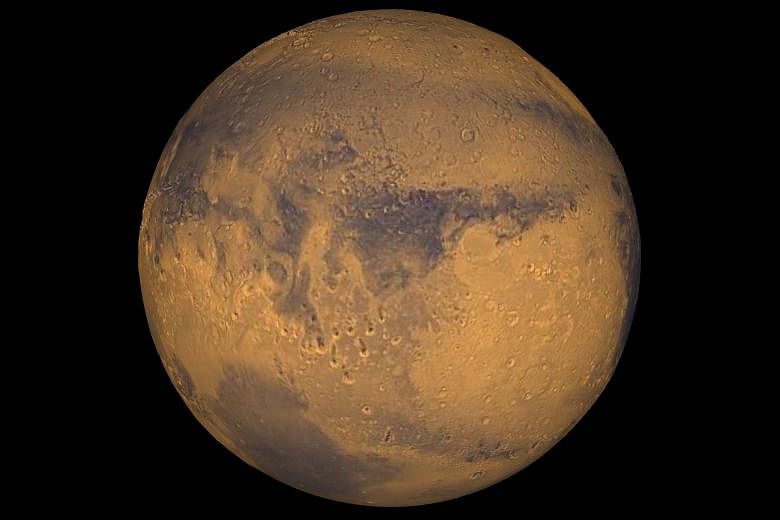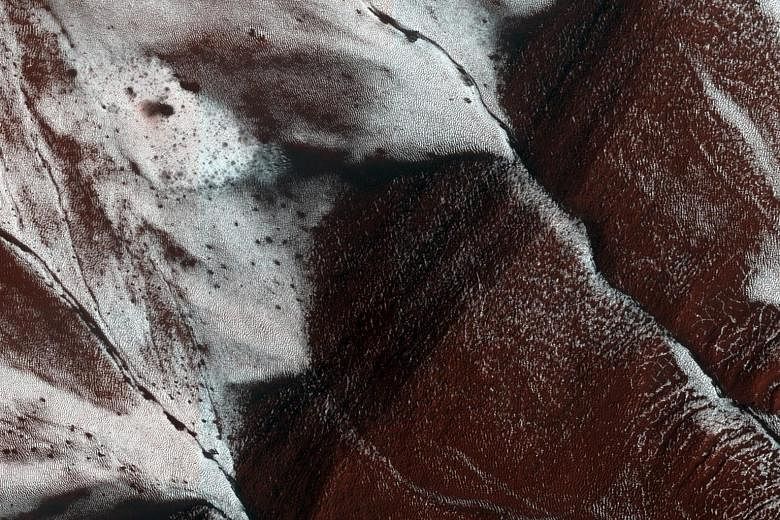NEW YORK • US space agency Nasa's finding that Mars has liquid water flowing on its surface has renewed speculation that life, if it ever arose there, could persist now.
"We haven't been able to answer the question, 'Does life exist beyond Earth?'" Mr James Green, director of Nasa's planetary science division, said on Monday. "But following the water is a critical element of that."
That marks a shift in tone for Nasa, where officials have repeatedly played down the notion that the dusty and desolate landscape of Mars could be inhabited today.
Now, Nasa's associate administrator for science, Mr John Grunsfeld, is talking of sending a spacecraft in the 2020s, perhaps with experiments to directly look for life.
"I can't imagine that it won't be a high priority with the scientific community," he said.
Nasa said the findings "provide the strongest evidence yet that liquid water flows intermittently on present-day Mars".
"To be able to live on the surface, the resources are there," said astronaut John Grunsfeld, who is also associate administrator of Nasa's science mission directorate.
Liquid water is considered an essential ingredient for life, and its presence raises the question of whether Mars could possess niches of habitability for microbial Martians.
Astrobiologist Lewis Dartnell of the University of Leicester Space Research Centre said the study raised the intriguing prospect of life. "If there is liquid water trickling beneath the surface, maybe that is an environment where bacteria and microbial life can survive."
Although Mars had rivers, lakes and maybe even an ocean a few billion years ago, the modern moisture is modest - small patches of damp soil, not pools of standing water.
In a paper in the journal Nature Geoscience, scientists identified waterlogged molecules - salts of a type known as perchlorates - on the surface in readings from orbit.
"That is a direct detection of water in the form of hydration of salts," said University of Arizona's professor of planetary geology Alfred McEwen, the principal investigator of images from a high-resolution camera on Nasa's Mars Reconnaissance Orbiter.
"There pretty much has to have been liquid water recently present to produce the hydrated salt."
By recently, he said he meant "days, something of that order".
In 2011, Prof McEwen and colleagues discovered in photographs from the orbiter dark streaks descending along slopes of craters, canyons and mountains.
The streaks lengthened during summer, fading as temperatures cooled, then reappeared the next year. They named the streaks recurring slope lineae, and many thousands of them have been spotted.
"We had to come up with new techniques and novel ways to do analysis of the chemical signature," said Mr Lujendra Ojha, a graduate student at the Georgia Institute of Technology, the lead author of the Nature Geoscience article.
The researchers were able to identify the telltale sign of a hydrated salt at four locations.
Many mysteries remain. For one, scientists do not know where the water is coming from.
"There are two basic origins for the water: from above or from below," Prof McEwen said.
But Mr Christopher McKay, an astrobiologist at Nasa's Ames Research Centre, does not think the recurring slope lineae are a very promising place to look. For the water to be liquid, it must be so salty that nothing could live there, he said. "The short answer for habitability is it means nothing," he said.
NEW YORK TIMES, AGENCE FRANCE-PRESSE



